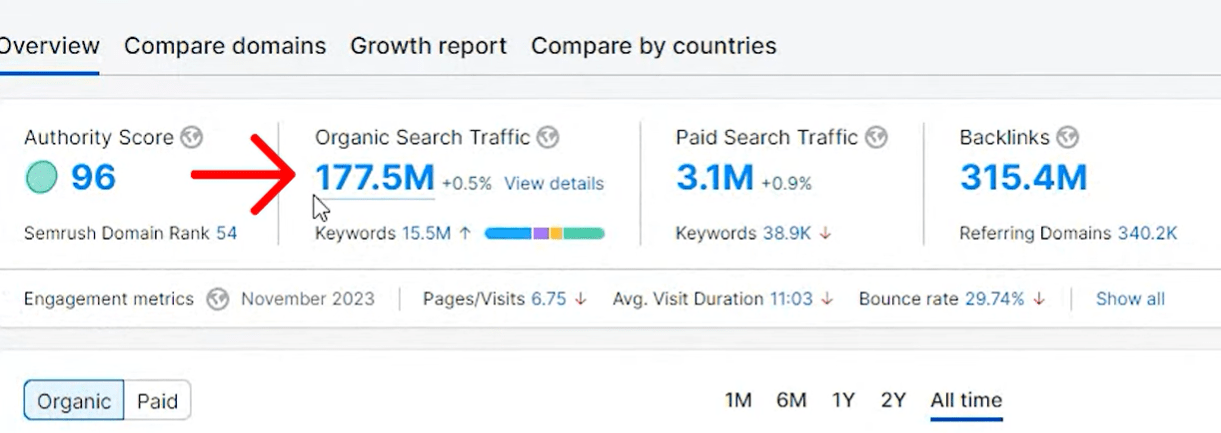IKEA’s SEO strategy offers clear lessons that Kenyan
e-commerce businesses can apply to their websites.
Structuring Collection Pages Like IKEA
IKEA’s collection pages are built to dominate search
results. These pages focus on broad, high-traffic keywords like “sofa” or
“dresser.”
They are carefully designed to balance visuals, content, and
links.
Here’s what Kenyan businesses can learn:
- Focus
on collection pages: Prioritize your category and collection pages
over individual product pages. These are the pages most likely to rank for
competitive keywords.
- Add
content that speaks to users: Include descriptions at the top and
bottom of your collection pages. For example, a furniture store in Kenya
could describe the types of sofas available and provide buying tips.
- Use
clear hierarchies: Structure your site logically. For example:
- A
main category like “Furniture.”
- Subcategories
like “Living Room Furniture,” “Dining Room Furniture,” and “Bedroom
Furniture.”
- Specific
product collections like “Sofas” or “Dining Tables.”
This structure makes it easy for Google to crawl your site
and for users to find what they need.
Leveraging Keywords for Local SEO
IKEA dominates high-volume, generic keywords like “dresser”
and “sofa.” While these keywords are highly competitive, Kenyan e-commerce
businesses can target more specific, local keywords to stand out.
Here’s how you can approach keyword optimization:
- Use
location-specific keywords: Focus on phrases like “furniture stores in
Nairobi” or “affordable beds in Mombasa.” These keywords target local
search intent and are easier to rank for.
- Optimize
titles and meta descriptions: Make sure your keywords appear naturally
in your H1 tags, meta titles, and meta descriptions. For example:
- Title:
“Affordable Sofas in Nairobi – Shop Quality Furniture Online.”
- Meta
Description: “Explore a wide range of affordable sofas in Nairobi.
Modern designs, fast delivery, and great prices. Order now!”
- Research
long-tail keywords: Look for specific, low-competition phrases like
“wooden dining tables in Kenya” or “modern TV stands for small spaces.”
These terms attract niche audiences with strong buying intent.
The Role of Visuals and Content Placement
IKEA’s approach to visuals and content placement is both
user-friendly and SEO-friendly. Their collection pages combine eye-catching
product images with well-placed text content.
This makes the pages engaging for users and easy for Google
to understand.
Here’s what Kenyan businesses can do:
- Use
high-quality images: Invest in professional product photography.
Images should be clear, well-lit, and showcase the product’s features. For
example, if you’re selling furniture, show close-ups of the materials and
finishes.
- Add
content where it counts: Place text content in strategic locations.
Use headings and descriptions at the top of the page to immediately tell
users what the page is about. Add detailed content at the bottom to
provide extra value and improve SEO.
- Include
product information: Make sure every product listing has enough
details to help users make decisions. For example, list dimensions,
materials, and delivery options.
Using Internal Links to Build Relevance
IKEA’s internal linking strategy connects similar pages to
build topical authority. Kenyan e-commerce websites can use the same approach
to strengthen their site’s structure and improve rankings.
Here’s how to apply this:
- Link
related categories and products: For example, if you have a category
for “Sofas,” link it to subcategories like “Sleeper Sofas” and “Corner
Sofas.”
- Create
content hubs: Write blog posts or guides that link to your product
categories. For instance, a furniture store could create a blog titled
“How to Choose the Best Sofa for Your Home” and link it to their sofa
collection page.
- Add
breadcrumbs: Use breadcrumb navigation to make it easy for users to go
back to parent categories. This improves the user experience and adds
extra internal links.
Balancing SEO and User Experience
IKEA succeeds because they don’t sacrifice user experience
for SEO. Their pages are well-designed, fast-loading, and easy to navigate,
while still meeting all SEO requirements.
Kenyan businesses can take a similar approach:
- Optimize
page speed: Slow-loading pages hurt both user experience and SEO. Use
tools like Google PageSpeed Insights to identify and fix issues.
- Keep
navigation simple: Make it easy for users to find what they’re looking
for. Use a clean menu structure and clear calls-to-action (e.g., “Shop
Now” or “Browse Collection”).
- Focus
on mobile optimization: Many Kenyan users shop on their phones. Make
sure your site is fully mobile-responsive and loads quickly on all
devices.
